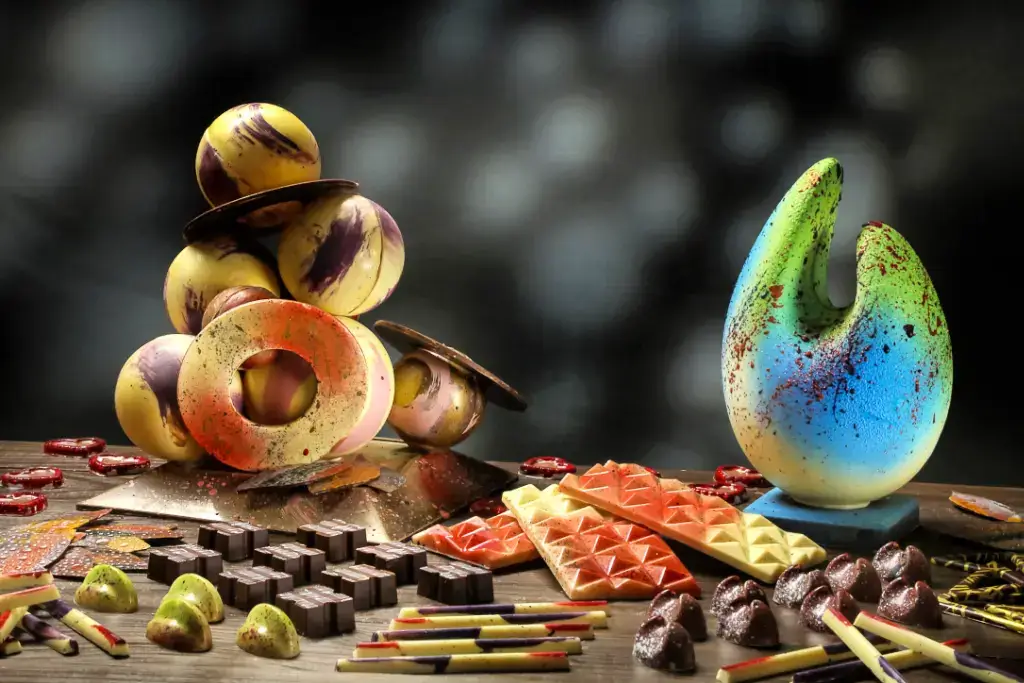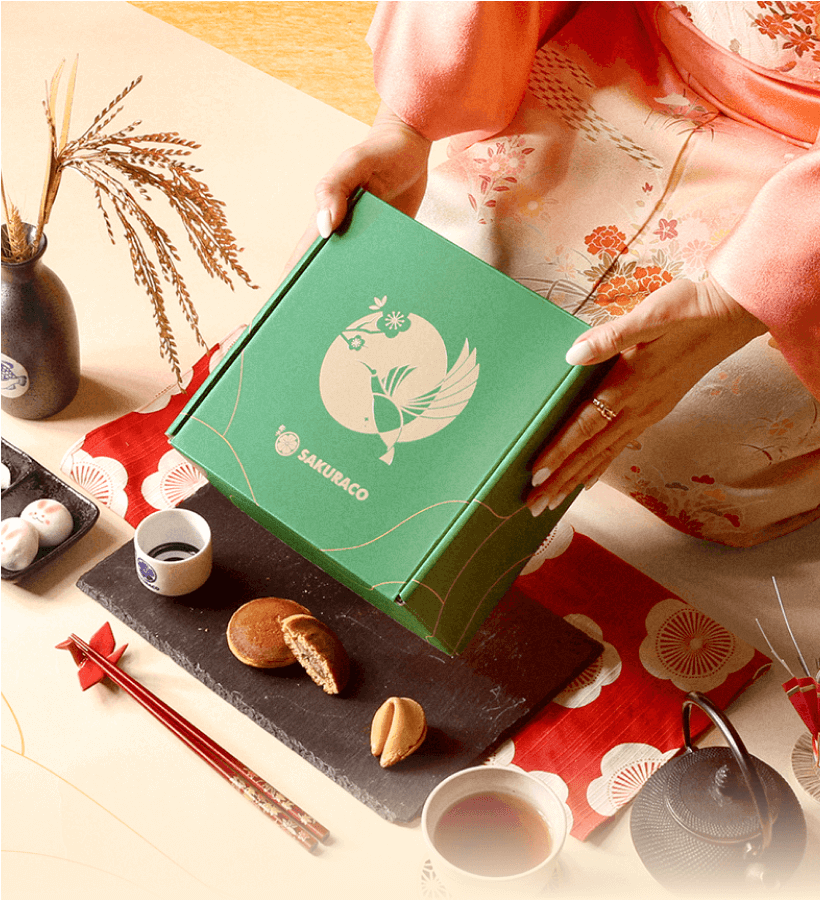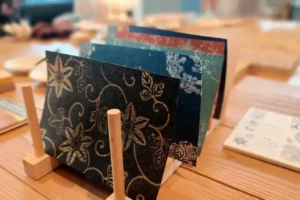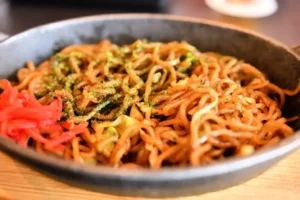The Japanese pastry chef team won the 2025 Pastry World Cup in a dazzling show of skill and creativity. They edged out host nation France to take first place on the podium for the second time. The prestigious competition in Lyon, France, occurs every two years. Top pastry chefs worldwide come together to compete under intense time and quality pressure. Each team includes three specialists: one in chocolate, one in sugar, and one in frozen desserts.
They must create complex, beautiful, delicious Japanese desserts that impress judges. Japan’s creations stood out with delicate flavors and deep cultural inspiration. France, known for its pastry legacy, took home the silver medal. Japan’s win highlights its growing influence in the world of pastry. It shows how tradition and innovation can come together beautifully and deliciously.
Table of Contents
ToggleThe Art of the Pastry World Cup
Often called the Olympics for the pastry chef, the Pastry World Cup is more than just a dessert competition. It’s a spectacular celebration of technique, storytelling, and cultural heritage all expressed through sugar, chocolate, and ice. This year’s competition occurred over two days, January 20 and 21, in Lyon, France. Teams from Egypt, Mauritius, South Korea, and Mexico competed worldwide. Each team had three pastry chefs, one specializing in sugar work, one in chocolate, and one in frozen desserts.

They were challenged to create three types of desserts under intense time pressure. The first was a frozen dessert, requiring both flavor and technical precision. The second was a restaurant-style plated dessert, with optional garnishes added live at the judging table. The third was a chocolate-based artistic showpiece, meant to impress with both beauty and skill. Each team had just five hours to complete all three creations from start to finish.
Team Japan’s Winning Creations
Team Japan, led by pastry chef and Japanese chocolate expert Masanori Hata, approached the competition with deep respect for tradition. Their theme was rooted in national identity, and they used symbolic shapes and culturally meaningful flavors in each creation. They made lemons, pears, marigolds, and chocolate granita shaped like asanoha (hemp leaf) for their restaurant dessert. This traditional Japanese motif, often found in textiles, added elegance and heritage to the dish’s design.

The dessert was beautiful and delicious, capturing the refined spirit of Japanese aesthetics. Their frozen dessert drew inspiration from childhood memories and was shaped like a spinning top toy. It blended playful presentation with apricot flavor and technical mastery, winning over the judges. They packed the history and culture of Japan into the design. They also used delicate traditional patterns to highlight their skills and tell a story through flavor.
Craving more Japanese sweets? Check out Sakuraco! Sakuraco delivers traditional Japanese snacks, teas, and sweets from local Japanese makers directly to your door so you can enjoy the latest treats directly from Japan!
Fierce Global Competition for the Pastry Chef
Though the competition occurred in France, Team France earned silver this year. Their entries were spectacular, especially a theatrical chocolate showpiece featuring chocolate eggs filled with hazelnut soufflé mousse. The eggs were topped with chocolate streusel, dipped in citrus-vanilla clarified butter, and served with grilled vanilla ice cream and clementine confit.
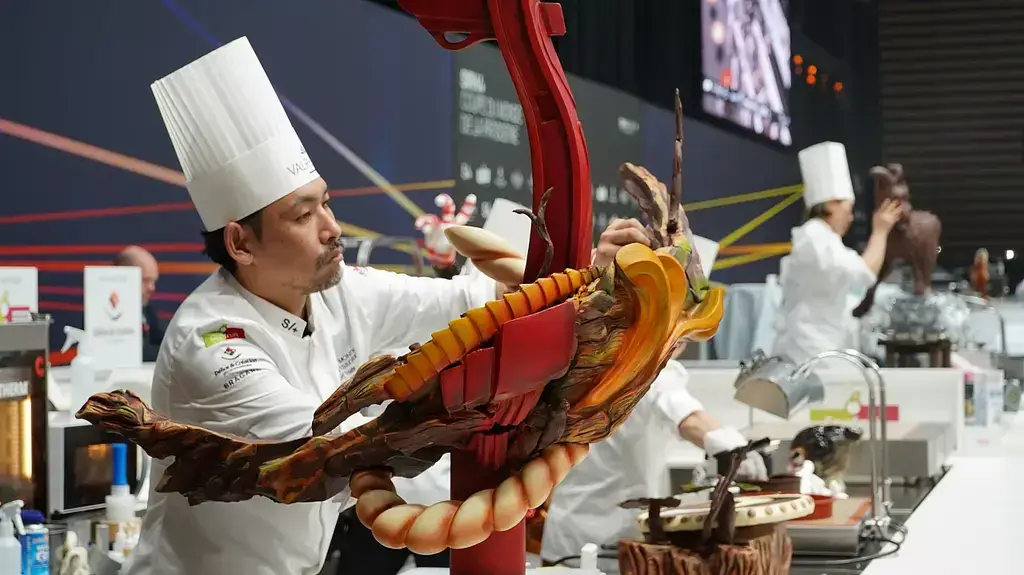
The dish was both luxurious and technically masterful, but Japan’s blend of story and flavor ultimately won over the judges. Team Malaysia claimed the bronze, marking their highest placement in the competition’s history. Their frozen dessert combined bright citrus, apricot, and delicate spice to honor their multicultural roots.
It was a proud and emotional moment for both the team and Southeast Asia as a whole. Other top ten teams included China, Belgium, Italy, South Korea, Singapore, the United Kingdom, and Argentina. Each team showcased unique techniques and creative interpretations inspired by their home country. Judges looked at taste, technical skill, originality, and how well each dish reflected national identity.
Why This Win Matters
For Japan, this gold-medal win celebrates the country’s growth and impact in global pastry. Once dominated by European traditions, the pastry world sees Japanese chefs blending precision, culture, and artistry. Their style mixes exacting precision, modern artistry, and deep cultural roots to create something truly unique and inspiring.
Winning twice shows Japan’s dedication and rising influence in the pastry world. It also encourages a new generation of Japanese pastry chefs to believe in their traditions and creativity. Japanese flavors, aesthetics, and techniques now have a strong and well-deserved place on the world stage.
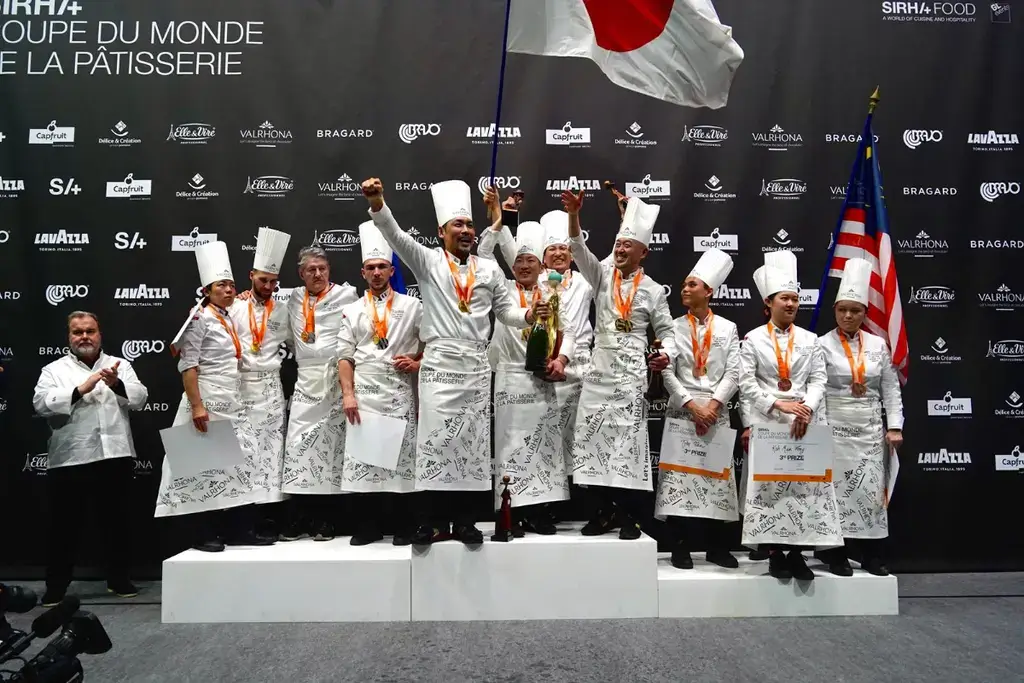
Why Japan’s Pastry Win Matters More Than Gold
People often see dessert as just the sweet ending to a meal. But in the hands of Team Japan, it became something much more, a powerful form of storytelling. From the elegant folds of the Asanoha granita to the spinning top dessert, Team Japan crafted more than just food. They told a story that moved judges and audiences through beauty, meaning, and technical skill in every detail. Their 2025 Pastry World Cup win shows how dessert can express identity, culture, and creative passion.
As Japan takes a well-deserved bow on the world pastry stage, fans eagerly await what’s next from these culinary artists. If this year is any hint, the future of pastry is bright, and Japan is leading the way forward. Have you ever experienced a dessert that told a story or connected with your culture? Share your thoughts in the comments below!

